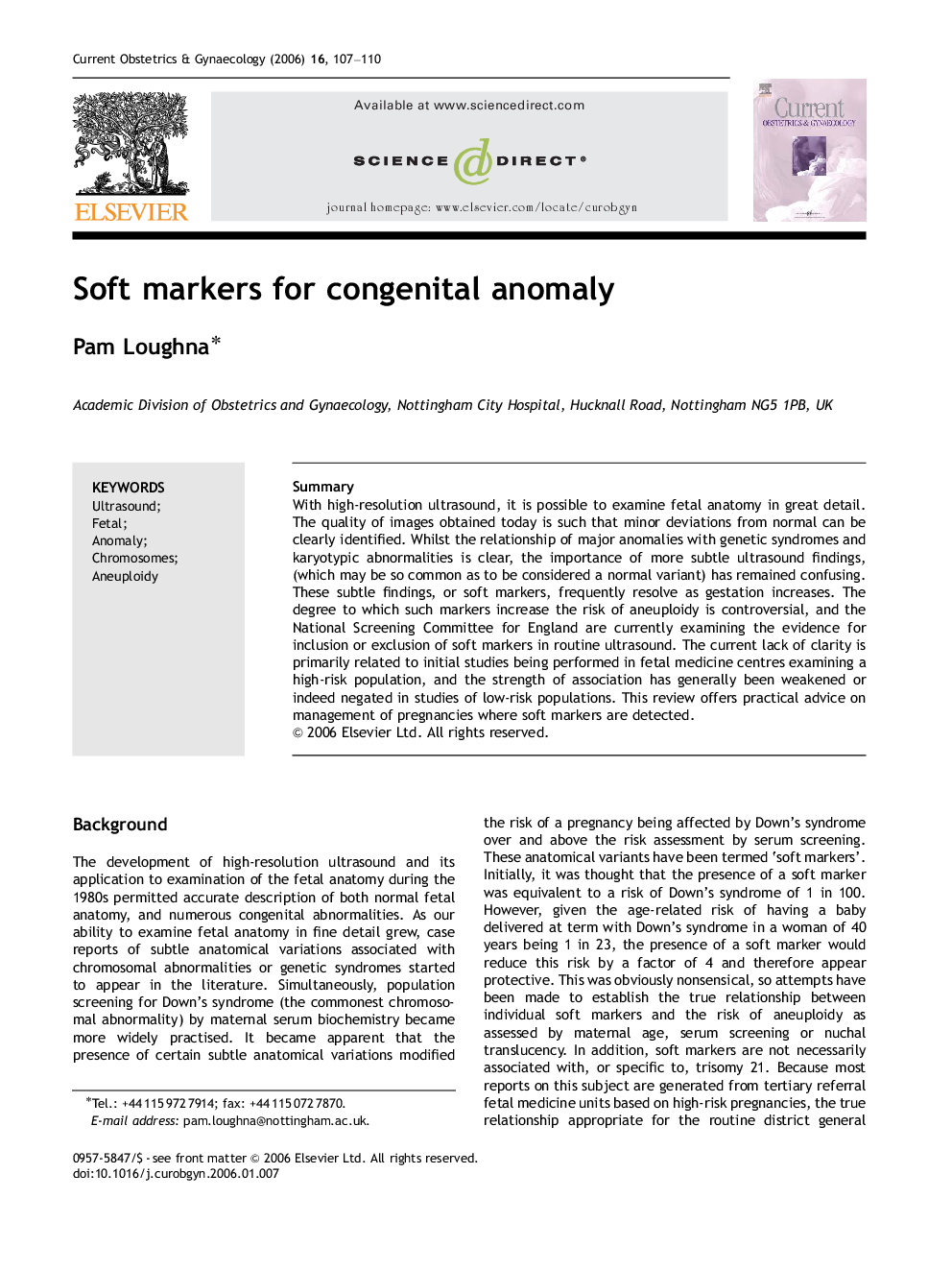| Article ID | Journal | Published Year | Pages | File Type |
|---|---|---|---|---|
| 3916326 | Current Obstetrics & Gynaecology | 2006 | 4 Pages |
SummaryWith high-resolution ultrasound, it is possible to examine fetal anatomy in great detail. The quality of images obtained today is such that minor deviations from normal can be clearly identified. Whilst the relationship of major anomalies with genetic syndromes and karyotypic abnormalities is clear, the importance of more subtle ultrasound findings, (which may be so common as to be considered a normal variant) has remained confusing. These subtle findings, or soft markers, frequently resolve as gestation increases. The degree to which such markers increase the risk of aneuploidy is controversial, and the National Screening Committee for England are currently examining the evidence for inclusion or exclusion of soft markers in routine ultrasound. The current lack of clarity is primarily related to initial studies being performed in fetal medicine centres examining a high-risk population, and the strength of association has generally been weakened or indeed negated in studies of low-risk populations. This review offers practical advice on management of pregnancies where soft markers are detected.
